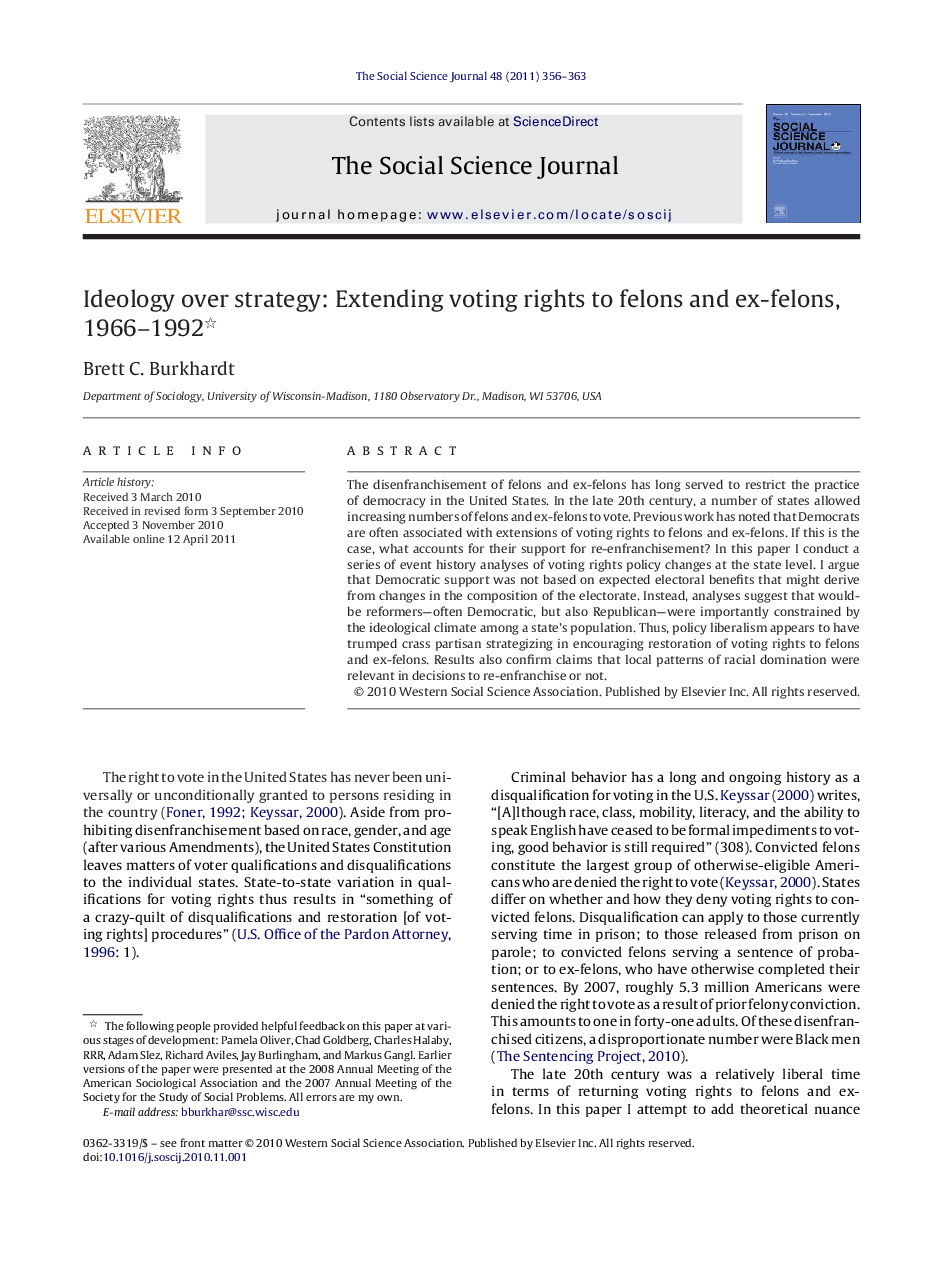| Article ID | Journal | Published Year | Pages | File Type |
|---|---|---|---|---|
| 140332 | The Social Science Journal | 2011 | 8 Pages |
The disenfranchisement of felons and ex-felons has long served to restrict the practice of democracy in the United States. In the late 20th century, a number of states allowed increasing numbers of felons and ex-felons to vote. Previous work has noted that Democrats are often associated with extensions of voting rights to felons and ex-felons. If this is the case, what accounts for their support for re-enfranchisement? In this paper I conduct a series of event history analyses of voting rights policy changes at the state level. I argue that Democratic support was not based on expected electoral benefits that might derive from changes in the composition of the electorate. Instead, analyses suggest that would-be reformers—often Democratic, but also Republican—were importantly constrained by the ideological climate among a state's population. Thus, policy liberalism appears to have trumped crass partisan strategizing in encouraging restoration of voting rights to felons and ex-felons. Results also confirm claims that local patterns of racial domination were relevant in decisions to re-enfranchise or not.
